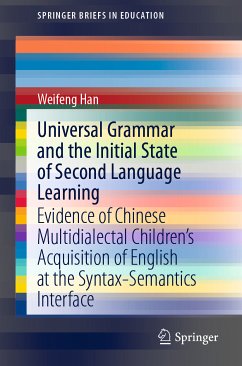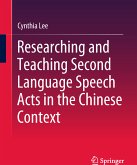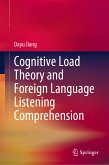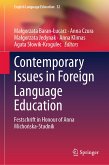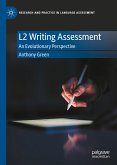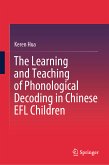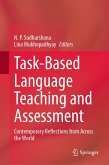Under the Universal Grammar (UG) framework, this book discusses the latest research on the role of L1 bidialectism in L2 acquisition, with a particular focus on early Chinese(L1)-English(L2) learners. Responding to the long-standing concern of whether L2 learners have access to UG in the target language, it provides evidence of the positive role of L1 multidialectism in L2 learning and confirms the role of UG in L2 acquisition. This book is essential reading for postgraduates and researchers in language education, linguistics, applied linguistics, speech-language pathology and psychology. The clarification of Chinese as L1 is also of interest to language educators in multilingual contexts.
Dieser Download kann aus rechtlichen Gründen nur mit Rechnungsadresse in A, B, BG, CY, CZ, D, DK, EW, E, FIN, F, GR, HR, H, IRL, I, LT, L, LR, M, NL, PL, P, R, S, SLO, SK ausgeliefert werden.
Hinweis: Dieser Artikel kann nur an eine deutsche Lieferadresse ausgeliefert werden.

